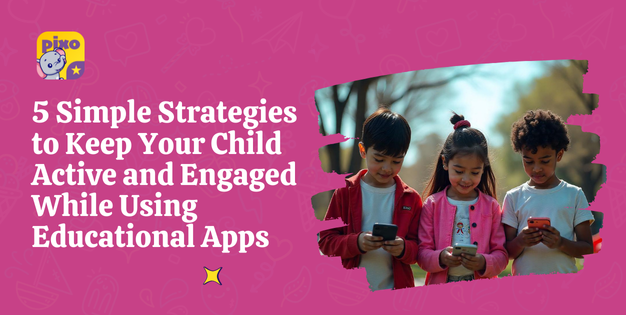
Top Baby Safety Guidelines for Grandparents
Grandparents are a treasure trove of love, wisdom, and cuddles for their grandchildren. But when it comes to baby safety, things have changed a lot

Kids love screen time—there’s no denying it. But as parents, we want to make sure that the time spent on educational apps actually helps them learn, grow, and stay engaged rather than just tapping mindlessly on a screen.
With the right approach, child-friendly educational apps can be powerful tools to spark curiosity, encourage critical thinking, and even build real-world skills. The trick? Keeping kids actively involved instead of just being passive viewers. Here’s how you can make learning through apps an engaging and interactive experience for your child.

Not all educational apps are created equal. Some are designed to be interactive learning tools that require kids to think, respond, and make choices, while others may lean toward passive content consumption.
When selecting an app, look for:
Educational app features like quizzes, puzzles, and storytelling activities help kids stay engaged instead of zoning out.

Too much screen time—even when it’s educational—can reduce focus and energy. A great way to manage screen time is to set clear limits while including movement breaks.
Try this approach:
This keeps their learning engagement high while preventing screen fatigue.
Kids learn best when they’re actively engaged, and interactive learning tools work even better when paired with real-life discussions. Instead of letting your child use an educational app alone, join in and turn it into a shared learning experience.
This approach not only enhances learning but also helps build communication and social skills.

One of the best ways to keep kids engaged is by linking what they’re learning in an app to real-world experiences. This makes learning feel relevant and exciting.
Examples:
When kids see that what they learn on a screen applies to their daily lives, they’re more likely to stay interested.
Children love a little motivation—and using active learning strategies with positive reinforcement can help keep their focus on educational apps rather than just entertainment.
Ways to encourage engagement:
This approach makes learning feel fun and rewarding while keeping their motivation levels high.
Feeling Overwhelmed? Let’s Talk! Join Our Parent Forum and Get Expert Advice & Support!
Choose interactive learning tools that require thinking, problem-solving, and creativity rather than passive watching. Join in their learning to make it more engaging.
Look for apps that include interactive challenges, movement-based tasks, quizzes, puzzles, and real-time feedback to encourage participation.
Set clear time limits, encourage breaks with physical activities, and balance app-based learning with real-world interactions like reading books, outdoor play, or hands-on experiments.
Yes! Many child-friendly educational apps are designed with active participation in mind, such as apps that promote problem-solving, storytelling, or creativity. Check for user reviews and educational endorsements before choosing one.
Encourage discussions, turn learning into a family activity, use reward systems for motivation, and connect app learning to real-world experiences for deeper engagement.
When used wisely, educational apps can be a great tool to keep children engaged, learning, and having fun. The key is to choose the right apps, balance screen time with breaks, and actively participate in their learning journey.
By following these simple strategies, parents can make sure that screen time remains meaningful and beneficial, keeping kids active, curious, and eager to learn!